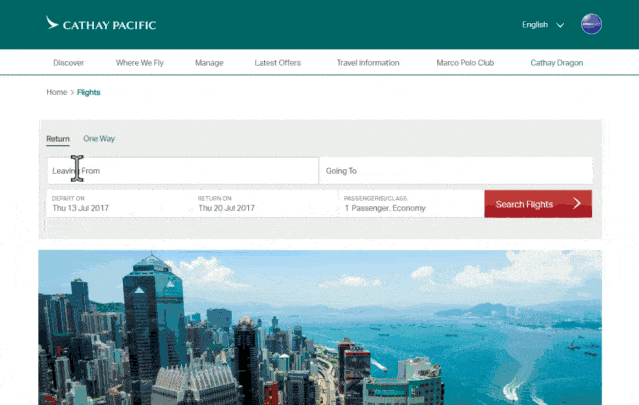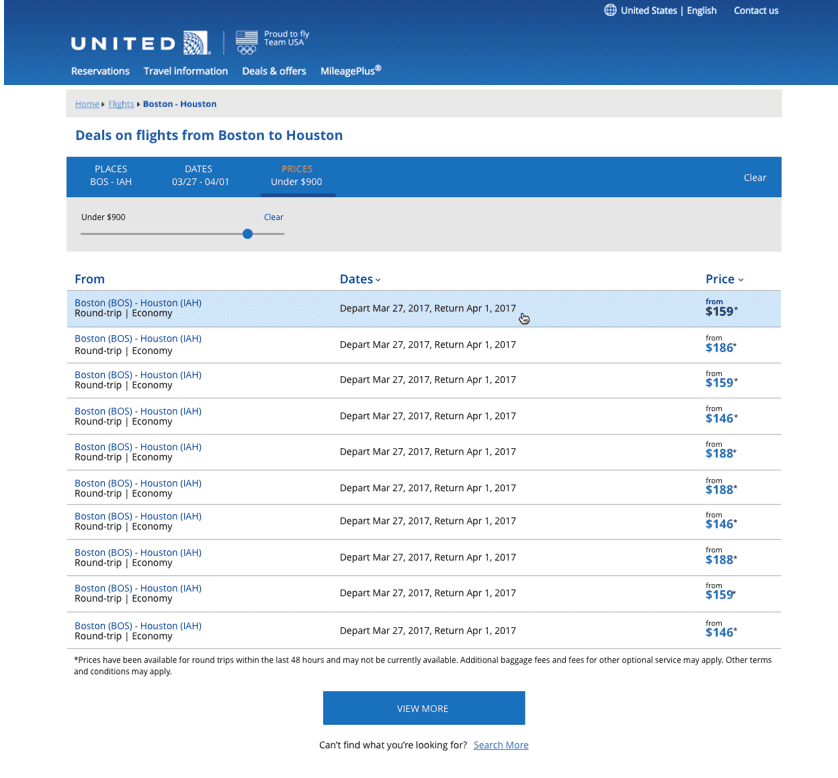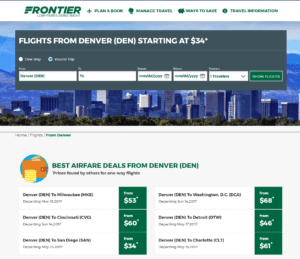- Why the old assumptions about airline flight search can harm sales
- Learn how user search data shifts the paradigm
- User search data = a better customer experience
Why Is it Important to Shift the Flight Search Paradigm?
Unfortunately, today’s airline customers are more dynamic than the airline industry gives them credit for. It used to be the case that potential customers would arrive on an airline’s site with a clear goal, neatly framed by a set of hard and fast parameters: January 1st, Miami to New York City, Economy Class. It was a simple, iterative pattern for online flight search that worked well for everyone.
But that is no longer the case. That quick and dirty search concept no longer accurately captures what a growing number of airline customers are actually looking for. Today, an increasing number of customers are arriving on an airline’s website with just one or two of the traditional parameters – not all of them – and looking for suggestions from the airline to fill in the blanks.
But because this new behavior doesn’t fit the traditional mold, airlines who stubbornly hold to that mold are missing out. They are not only losing sales, they are also driving these customers to a competitor who is willing and able to adapt.
But how to shift the paradigm? Simple. Airlines can leverage user search data to gain insight into what the customer is looking for. That way, when it comes time to fill in the blanks for them, the airline is in a position to make a predictive offer based on empirical knowledge of what the customer is looking for – even if the customer doesn’t yet know.
How Does User Search Data Shift the Flight Search Paradigm?
The traditional method of flight search works well for airlines because it fits with how they conceptualize their business. The customer narrows down the choices to a single possible flight and then the airline provides a quote.
But today’s airline customers, who are generally more familiar with search – especially millennials – don’t always think this way. These customers see nothing wrong with arriving on an airline’s site and saying “I have $250 to go somewhere. Make me an offer.”
Airlines that have user search data technology are poised to make a sale in this scenario because their offers will be based on additional, empirically verified, consumer-specific preferences.
In other words, they will be able to see that one customer recently viewed online content about museums, while another customer with the same request recently searched for camping equipment. To the first they will increase the likelihood of a sale by suggesting a culture destination such as NYC, while offering the latter a deal to a place like Denver, where there are plenty of outdoor activities.
And airlines without user search data? At best, they can throw out a random place and hope to get lucky. At worst, they won’t have any way to handle such a request because it lacks so many of the traditional parameters, and will send the customer on to a competitor.
Why Does User Search Data Create Better Customer Experiences?
Leveraging user search data to supplement searches that don’t have all the traditional elements puts the ball in the customer’s court. Instead of having an airline dictate what needs to be there before a purchase can be made, there is now a conversation between the customer and the airline about what the customer wants and what the airline can provide.
This opens the search world up to many new possibilities, based on a mutual understanding. Shifting the paradigm in this way results not only in more sales, but also an excellent customer experience to help airlines earn brand-loyal customers, dramatically increasing the lifetime value of those customers.





